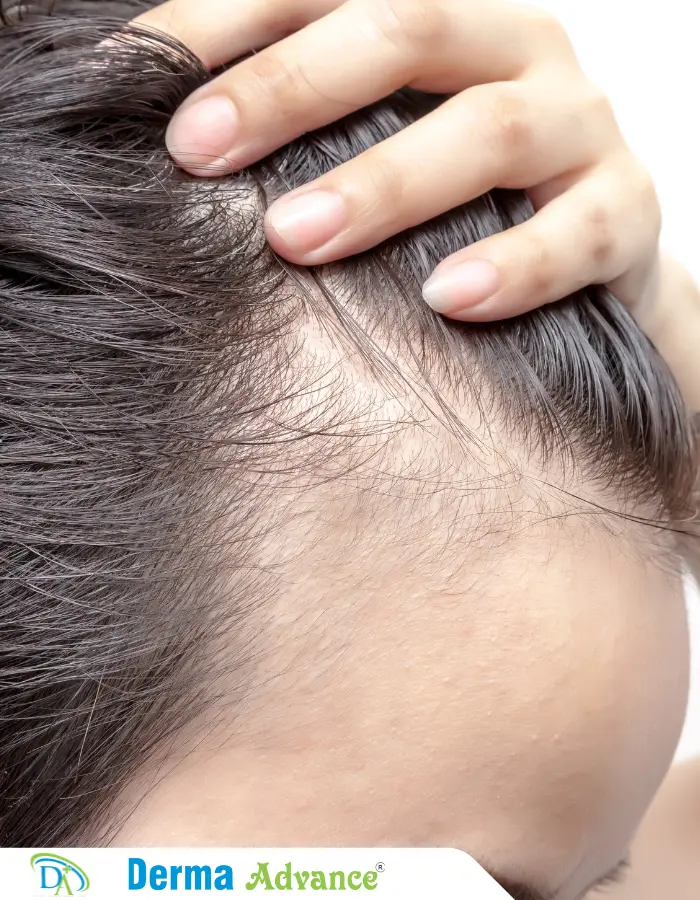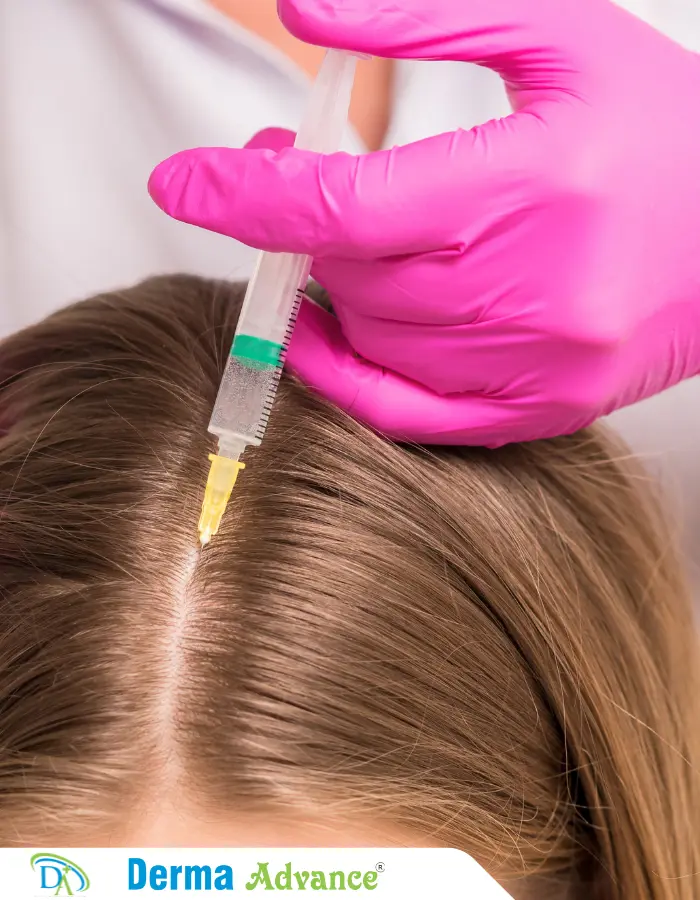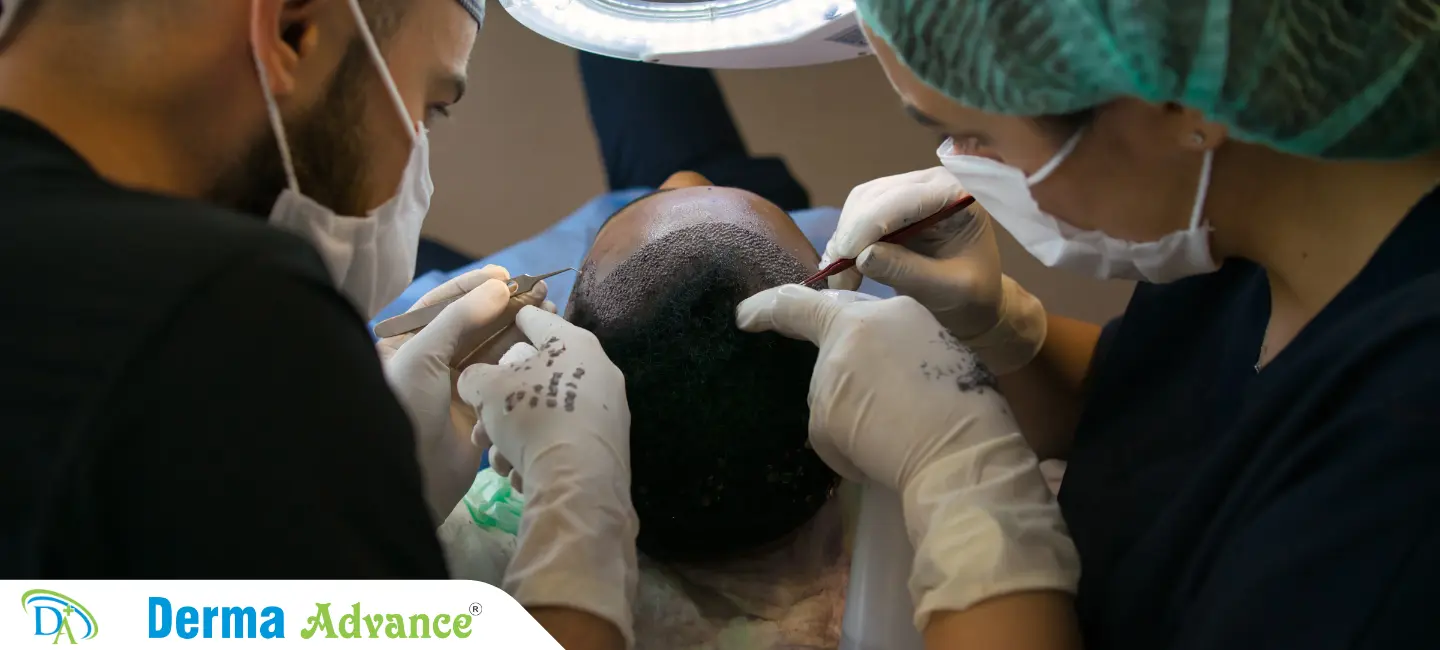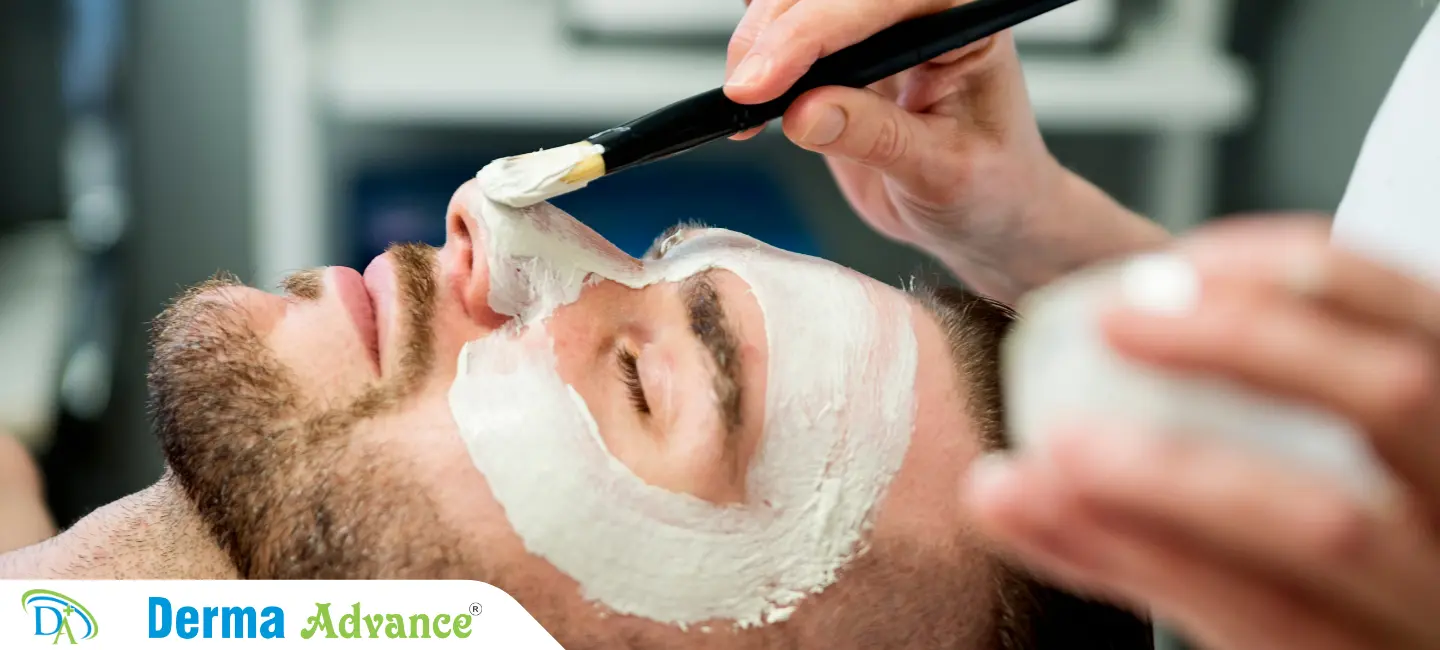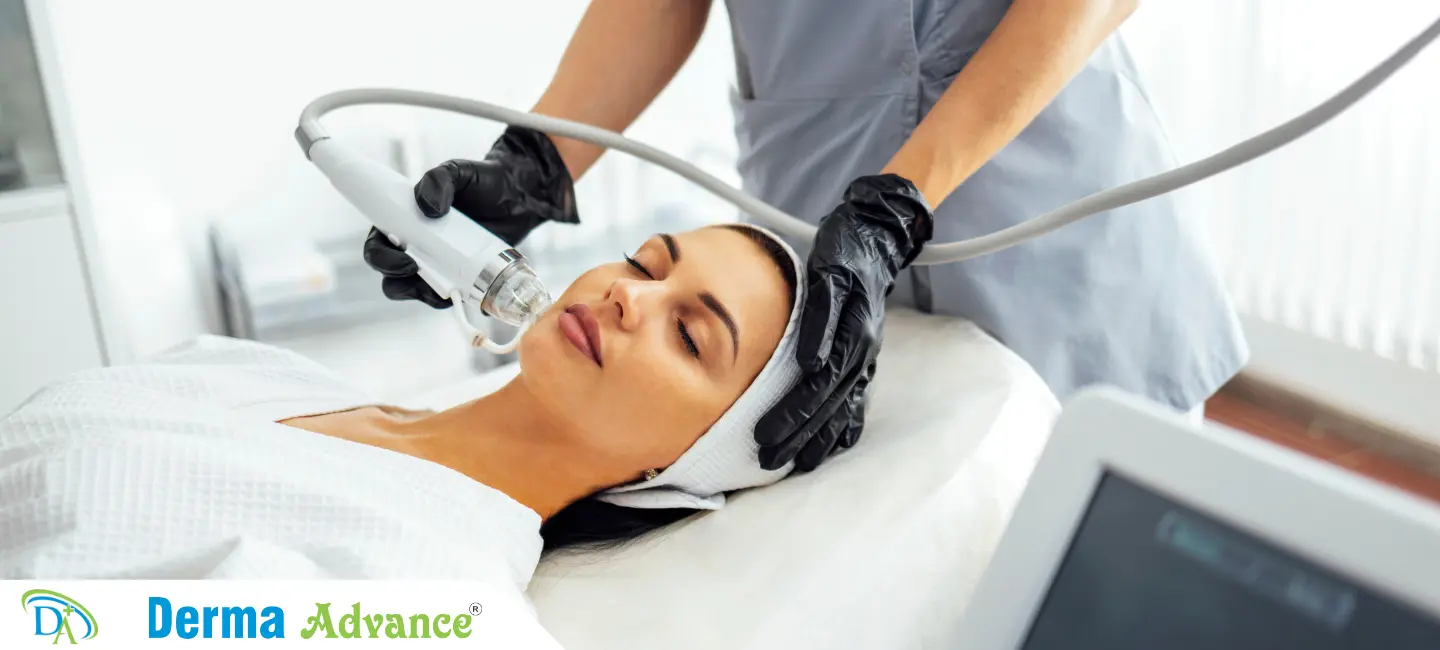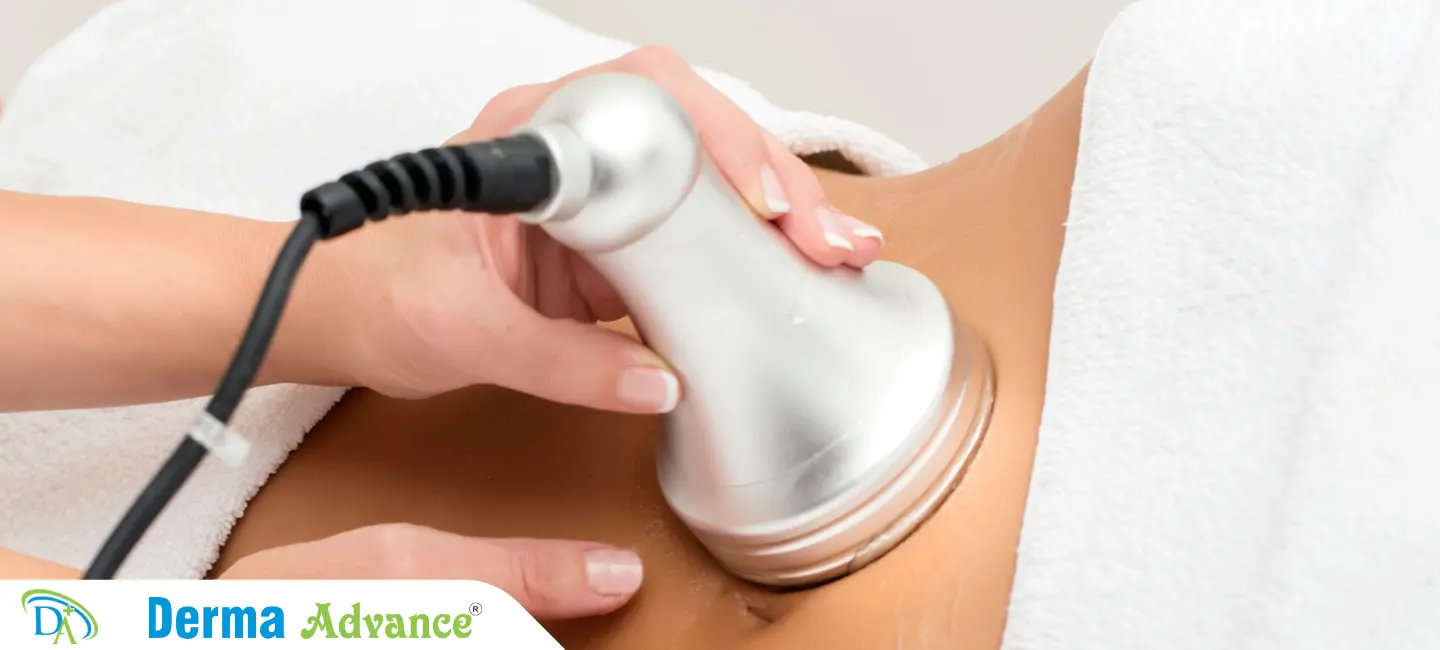What is Androgenic Alopecia?
Androgenic alopecia, or male/female pattern baldness, is a common genetic condition causing hair thinning and loss due to hormonal changes affecting hair follicles.
Androgenic alopecia is characterized by hair miniaturization and a progressive reduction in hair density over time. It is influenced by genetic predisposition and hormonal factors, particularly dihydrotestosterone (DHT), which shortens the hair growth cycle.
Hair loss typically begins with a receding hairline in men or diffuse thinning at the crown in women. Over time, affected hair follicles shrink and produce finer, shorter hairs until they cease producing hair altogether. Treatments range from topical minoxidil and oral finasteride to advanced hair restoration techniques like follicular unit transplantation (FUT) and platelet-rich plasma (PRP) therapy.
Immense Care
We aim to provide immense care tailored to manage and treat your health condition. Be assured, you are in safe hands!
Modern Techniques
We provide modern treatments to ensure you get the quickest and most effective solution to your health conditions!
Symptoms of Androgenic Alopecia
What are the Symptoms of Androgenic Alopecia?
Symptoms of androgenic alopecia include gradual hair thinning, especially at the crown or temples, in a distinct pattern. Hair loss may progress to visible scalp exposure and a receding hairline in men or diffuse hair thinning in women.
DHT, a derivative of testosterone, binds to hair follicles' androgen receptors, triggering miniaturization and shortening of the hair growth cycle. This leads to thinner, finer hairs that eventually stop growing altogether.
Prevention strategies focus on early intervention with FDA-approved medications like minoxidil and finasteride to slow hair loss progression. Advanced treatments like low-level laser therapy (LLLT) and hair transplant surgery offer options for restoring hair density and improving aesthetic outcomes.
Hair Thinning
Gradual reduction in hair density, noticeable thinning at the crown or hairline due to follicular miniaturization and reduced hair growth cycles.
Receding Hairline
Gradual retreat of the hairline from the forehead, commonly seen in men, characterized by a V-shape or M-shape pattern.
Diffuse Hair Loss
Generalized thinning of hair across the scalp, more prevalent in women, resulting in overall reduced hair volume and scalp visibility.
Scalp Visibility
Increased visibility of the scalp due to sparse hair coverage, resulting from hair follicle shrinkage and diminished hair production.
Hair Miniaturization
Progressive shrinking of hair follicles and production of finer, shorter hairs with each growth cycle, leading to reduced hair density and coverage.
Hair Loss Progression
Gradual progression of hair loss patterns, characterized by worsening thinning and visible scalp exposure over time.
Diagnosis of Androgenic Alopecia
1
Hair Loss Patterns
Evaluating distinctive hair loss patterns, including receding hairlines, thinning at the crown, and overall hair density changes indicative of androgenic alopecia.
2
Scalp Examination
Dermatological examination of the scalp to assess hair follicle health, scalp condition, and the presence of miniaturized hairs characteristic of androgenic alopecia.
3
Medical History
Reviewing the patient's medical history, family history of hair loss, and lifestyle factors influencing hair health to personalize treatment recommendations for androgenic alopecia.
4
Hair Analysis
Using advanced imaging and hair analysis tools to evaluate hair density, follicle miniaturization, and growth cycle abnormalities contributing to androgenic alopecia progression.
5
Hormonal Evaluation
Testing hormone levels, including DHT and testosterone, to assess their impact on hair follicles and guide targeted therapies for androgenic alopecia management.
6
Scalp Biopsy
Surgical procedure to obtain tissue samples from the scalp for microscopic analysis, aiding in diagnosing androgenic alopecia and ruling out other scalp conditions.
Book Your Appointment
Find Solution to Androgenic Alopecia Now!
Meet Our Expert Androgenic Alopecia Specialists


Treatment of Androgenic Alopecia
How is Androgenic Alopecia treated?
Treatment options for androgenic alopecia aim to inhibit DHT production and stimulate hair follicle growth. Topical minoxidil is applied directly to the scalp to promote hair regrowth and prevent further thinning.
Oral finasteride blocks the conversion of testosterone to DHT, reducing its effects on hair follicles and slowing hair loss progression in men. Combination therapies with minoxidil and finasteride enhance treatment outcomes.
Advanced options include low-level laser therapy (LLLT) devices that stimulate hair follicles, promoting thicker hair growth. Hair transplant surgeries, such as follicular unit extraction (FUE) or FUT, relocate healthy hair follicles to balding areas for natural-looking results.
Topical Minoxidil
FDA-approved solution applied to the scalp to stimulate hair follicles, promote hair regrowth, and prevent further hair loss in men and women with androgenic alopecia.
Oral Finasteride
Prescription medication that inhibits the enzyme 5-alpha-reductase, reducing DHT levels and slowing hair loss progression in men with male pattern baldness.
Low-Level Laser Therapy (LLLT)
Non-invasive treatment using laser devices to stimulate hair follicles, increase blood flow, and promote hair growth in individuals with androgenic alopecia.
Hair Transplant Surgery
Surgical procedures like follicular unit extraction (FUE) or follicular unit transplantation (FUT) to transplant healthy hair follicles from donor sites to balding areas, restoring natural hair density and coverage.
Combination Therapies
Concurrent use of minoxidil and finasteride to maximize hair regrowth and halt hair loss progression, customized based on individual response and treatment goals.
Platelet-Rich Plasma (PRP) Therapy
Injecting concentrated platelets from the patient’s blood into the scalp to stimulate hair follicles, enhance hair growth, and improve overall hair quality in androgenic alopecia patients.
Causes of Androgenic Alopecia
1
Genetic Predisposition
Inherited genetic factors play a significant role in determining susceptibility to androgenic alopecia, influencing hair follicle sensitivity to hormonal changes.
2
Hormonal Influence (DHT)
Dihydrotestosterone (DHT), a derivative of testosterone, binds to hair follicle receptors, triggering miniaturization and shortening of the hair growth cycle in androgenic alopecia.
3
Environmental Factors
Excessive stress, poor nutrition, and exposure to environmental pollutants contribute to oxidative stress, inflammation, and accelerated hair loss in individuals predisposed to androgenic alopecia.
4
Lifestyle Habits
Smoking, excessive alcohol consumption, and inadequate scalp care routines can exacerbate hormonal imbalances and compromise hair follicle health in androgenic alopecia patients.
5
Aging Process
Natural aging processes lead to hormonal fluctuations and reduced hair follicle regeneration capacity, contributing to progressive hair thinning and loss in androgenic alopecia patients.
6
Autoimmune Factors
Immune system dysfunction and autoimmune disorders may trigger inflammation and hair follicle damage, exacerbating hair loss patterns in genetically predisposed individuals.
How to Prevent Androgenic Alopecia?
Androgenic alopecia, or male/female pattern baldness, is a common genetic condition causing hair thinning and loss due to hormonal changes affecting hair follicles.
Early intervention with FDA-approved treatments like minoxidil and finasteride is crucial in preventing androgenic alopecia progression by promoting hair regrowth and inhibiting DHT effects on hair follicles.
Maintaining a balanced diet rich in vitamins and minerals supports hair health, while stress management techniques reduce cortisol levels that contribute to hair loss. Regular scalp massages and avoiding hairstyles that stress hair follicles can also aid in maintaining hair density and quality.


